The making of a flamenco guitar: wood
In this article and those to follow, we will explore the process of making a Spanish guitar in its flamenco form. In this series we will provide a detailed explanation of the different steps involved in the shaping of the various parts of the guitar.
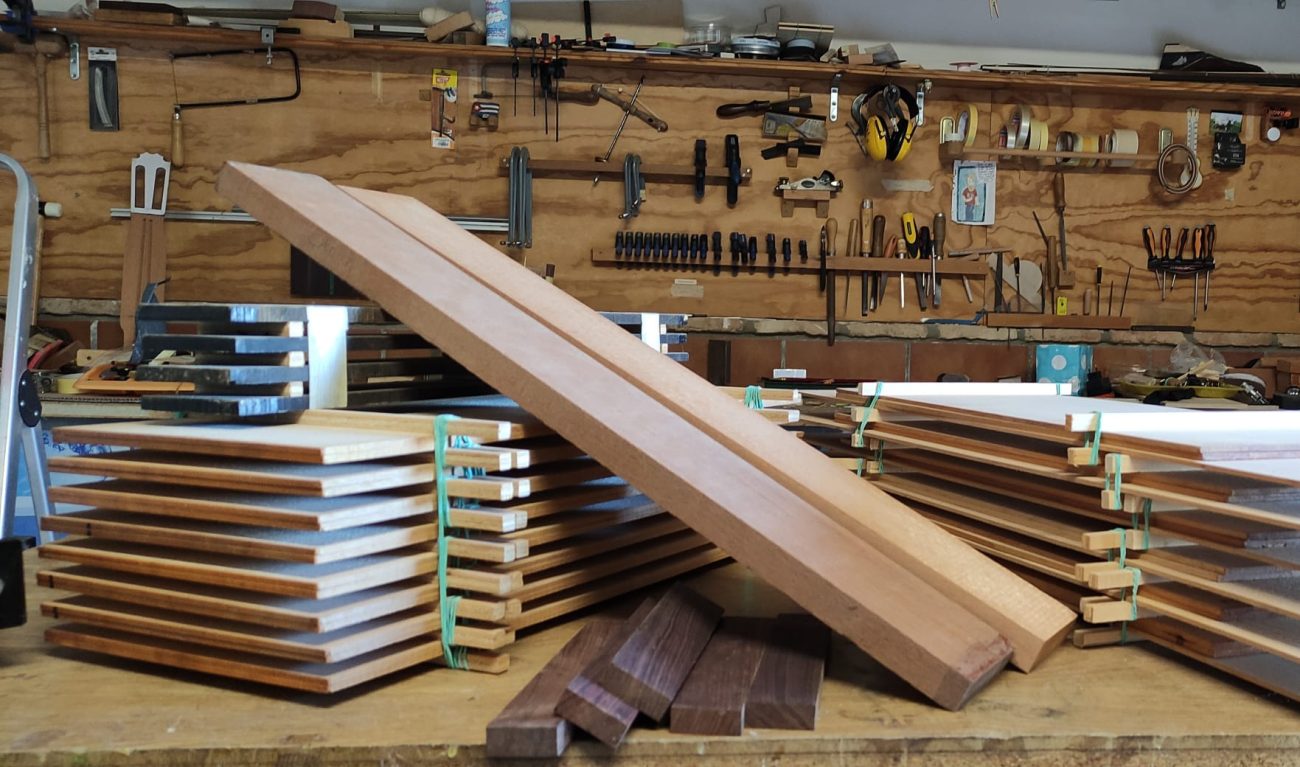
In our series Guitar Ways we want to include everything that relates to the flamenco guitar and its universe. Thanks to the kindness of luthier Tato Rodríguez, a licensed naval carpenter and woodworker from Huelva (southwestern Spain), we will explore the process of making a Spanish guitar in its flamenco form. In this series we will provide a detailed explanation of the different steps involved in the shaping of the various parts of the guitar, so that we can understand how wood becomes the sound that delights every guitarist. I hope that you will enjoy this series of articles, and please forgive me for any mistakes. My goal is to explain the process of making a guitar from a personal perspective. Finally, I will not annoy you with boring technical terms, as those can be easily found on the internet. What I will do is to give a first-hand account about how to make a flamenco guitar.
In this first submission we will discuss the raw material, the different types of wood that are joined harmoniously for the sound to be able to flow from the guitar’s soul. For this purpose, we have met with various luthiers and guitar makers. I must give thanks for all the support, kindness and good disposition of all those who welcomed me in their homes and workshops. In Seville’s Macarena district we visited the workshop of Francisco Alberto Pantoja, son of the celebrated Alberto Pantoja and Esperancita, who always greets the visitors of the shop. In Cadiz, we visited David Jiménez Rodríguez, from Sanlúcar, a young man with a promising future ahead. In Jerez we chatted with Jorge de Zofia, who opened the doors of his house to show us his treasured guitars. And in Huelva, besides Tato Rodríguez, we visited Jose Antonio Gómez, from Paterna del Campo, one of the five finalists in the Concurso Internacional de Guitarras Antonio Marín, part of the Festival de Guitarra de Granada.
In this introduction to guitar making, we must be aware that any good luthier understands the importance of the wood. It is essential for the luthier to gather all the materials for the making of their guitar. Regarding the wood, there is a wide variety to chose from, and we must know the various characteristics of each type, or we may be faced with unpleasant surprises after we begin the process of building the guitar, seeing all our efforts go to waste, as the final result depends in great measure on the materials, utensils and other components used. The quality of materials will determine the timbre, volume, resistance, duration and quality of the sound.
Luthiers not only focus on the types of wood. They also consider where the trees were planted, the structure of their veins and their physical and chemical properties. To choose the right wood, we must note the type of plant it comes from, its country of origin and its parenchymatic tissue. That is how we will be able to appreciate the quality of the veins and the wood’s properties. Besides these characteristic, other physical and mechanical tests are performed to assess the wood’s curvature or its resistance to bending, resistance to compression and traction, as well as its elasticity. Other aspects to consider are the dryness of the wood and possible structural defects such as knots and cracks. Such classification helps us select the wood based on its dryness and quality, providing us with a catalogue of guitars from beginner’s quality to superior, professional quality.
The different types of wood are analysed to assess which ones are the best suited for the different parts of the guitar. The wood’s characteristics will determine the sound, timbre, tune and the special sound projection of the instrument. Each part of the guitar uses a different type of wood. That is why soundboards are made of cedar or spruce, fretboards are made of ebony and the sides and backs are made of cypress or rosewood. The reason for this is that each type of wood has particular acoustic properties that will define the guitar’s sound. Thus, some parts are made from heavy and rigid wood, and others from lighter wood, because each part of the guitar has a specific purpose.
«The wood is generally dried for at least one year, so that a well-crafted guitar made from good raw materials guarantees a musical instrument of exquisite quality.»
Let us start with an essential part of the guitar, its soul. The soundboard is generally made from European spruce or cedar from Honduras, Brazil or Canada. The purpose of the soundboard is to propagate the vibrations made by the strings, that is, to make the sound. This happens because the soundboard vibrates at the same frequency as the strings and the sound bounces in the back, amplifying it outwards.
The back and the sides make the vibrations emitted from the soundboard bounce outwards. The sound is projected towards the front, so it is not dispersed sideways or towards the back. These two parts of the guitar are made from the same type of wood. Traditionally, cypress is used for flamenco guitars while Indian rosewood is generally used for classical guitars. Nowadays, other types of wood are also being tried, such as bubinga, cocobolo, tropical ebony, sycamore, Lebanese cedar, sapele, maple, mahogany and walnut. Burseras and dalbergias — that is, the rosewood family — have also been used: pink rosewood, pau ferro, ziricote or rosewood from Brazil, India and Madagascar.
The types of wood used for the neck and fretboard do not have a great impact on the sound of the guitar. The priority, then, is to achieve comfortable guitar playing. The neck is generally made of cedar, particularly from Honduras, although mahogany and maple are sometimes also used. The fretboard is typically made of ebony, while rosewood, mahogany and walnut are also used. Indian rosewood is often preferred for the bridge, where the strings are tied, and also for the headstock. Besides, the saddle upon which the strings rest, on the bridge or where the neck joins the headstock, is typically made of calf’s bone.
«Each part of the guitar uses a different type of wood. That is why soundboards are made of cedar or spruce, fretboards are made of ebony and the sides and backs are made of cypress or rosewood. The reason for this is that each type of wood has particular acoustic properties that will define the guitar’s sound. Thus, some parts are made from heavy and rigid wood, and others from lighter wood»
There are two places that identify the luthier: the headstock, which generally has a specific design, and the rosette, which is often handcrafted.
Normally, all wood is stored in a dry place with a stable temperature between 20°C and 25°C (68°F to 77°F), so that its quality is not affected by humidity or temperature variations. The wood is generally dried for at least one year, so that a well-crafted guitar made from good raw materials guarantees a musical instrument of exquisite quality.
In the following articles we will give a first-had account of each step in the process of making a flamenco guitar. From the workshop of Tato Rodríguez, and under his guidance, we will undertake all the work we will be describing. We have decided to make a guitar with a soundboard made of Alpine spruce and sides and back made of cypress.
*To be continued…
Top image: Various wood types in the workshop. Photo by David Jiménez Rodríguez
Translated by P. Young


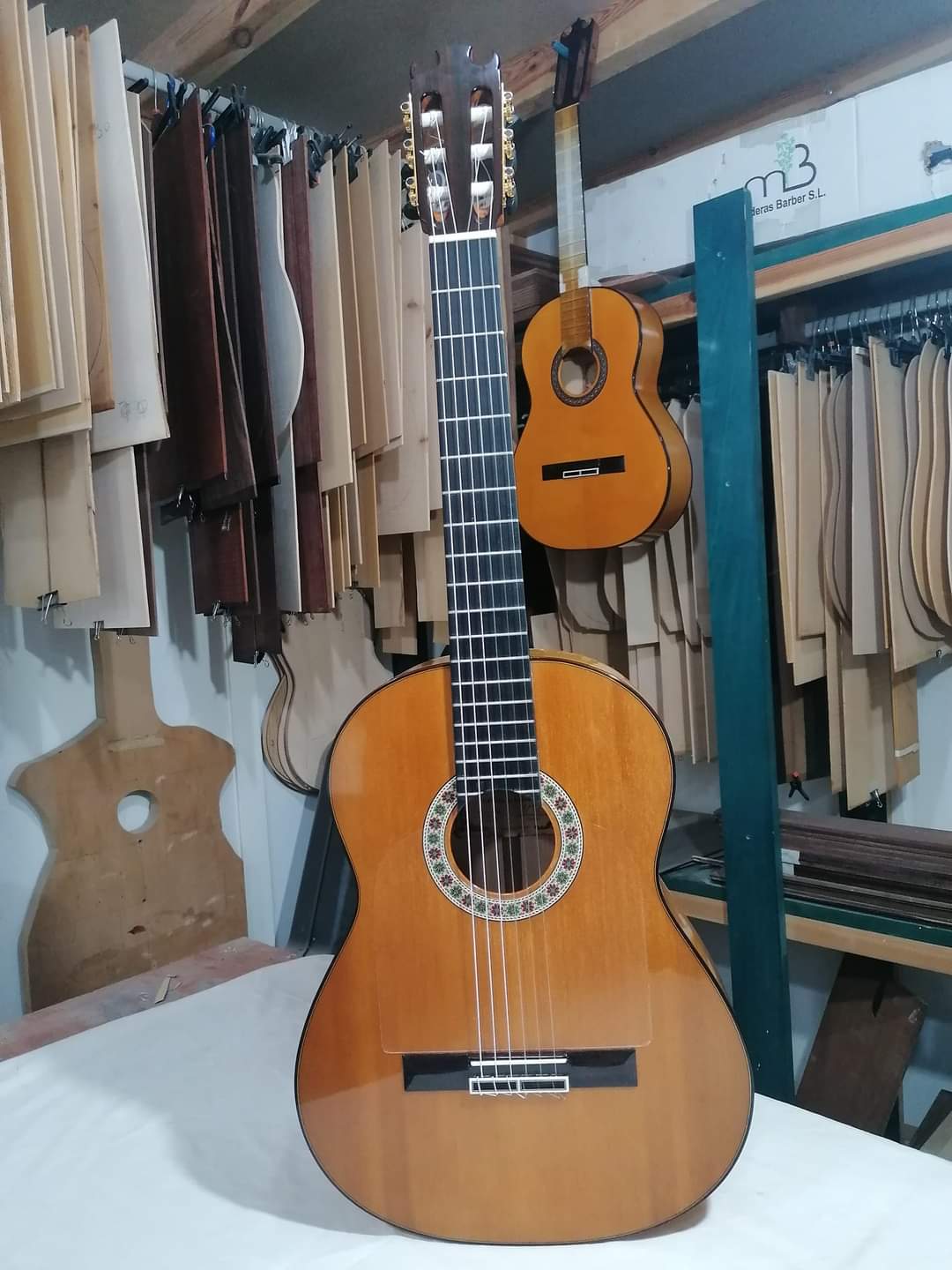
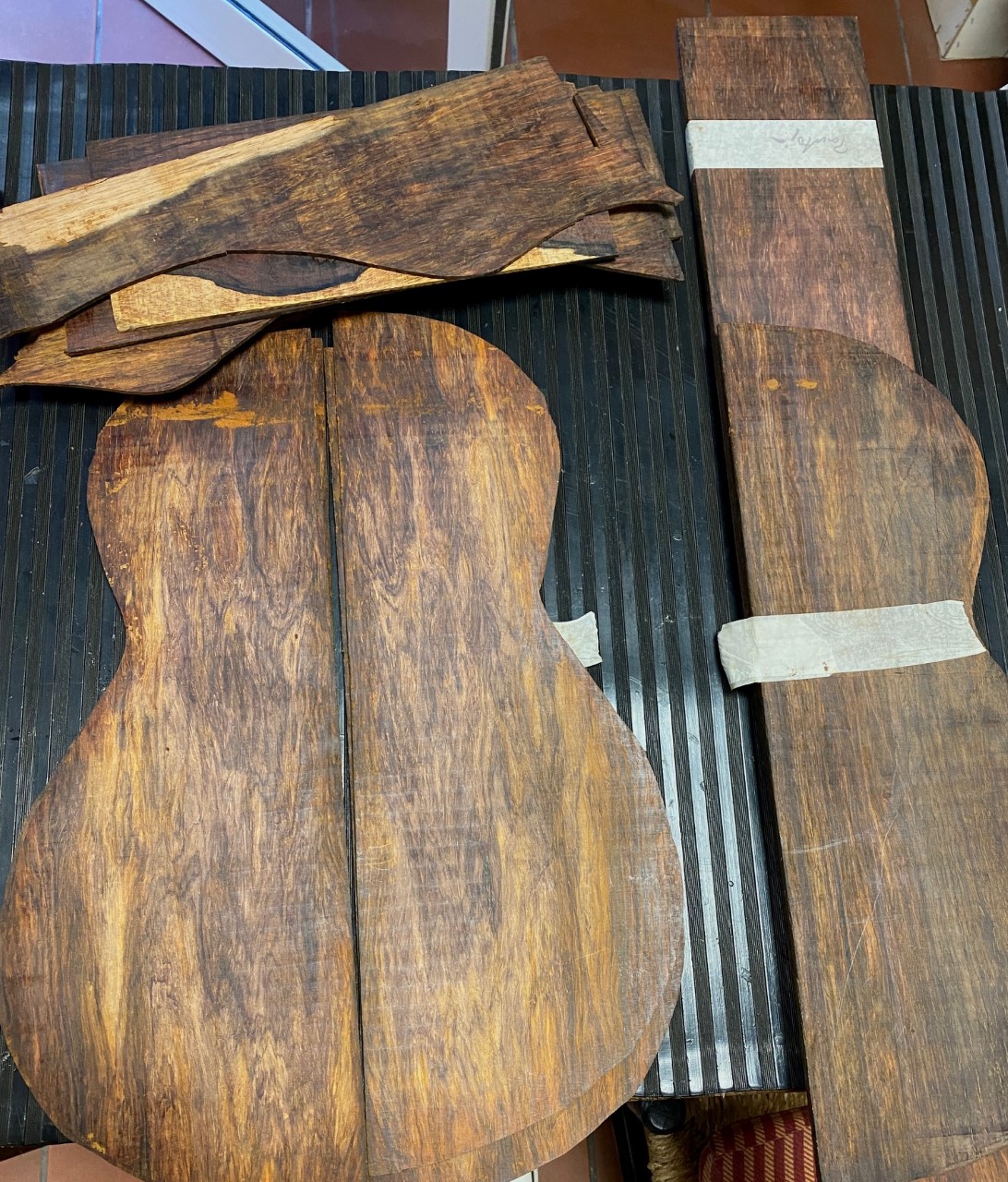
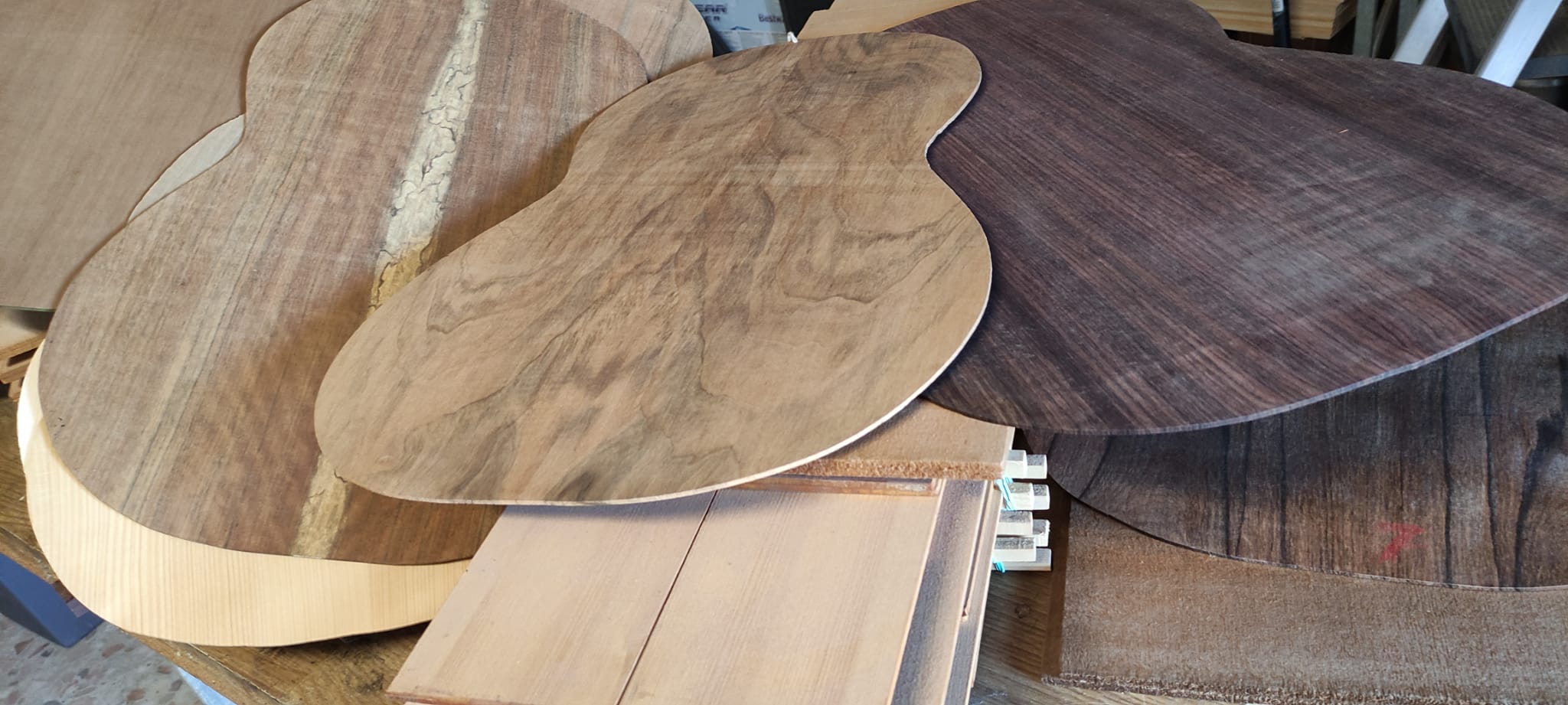
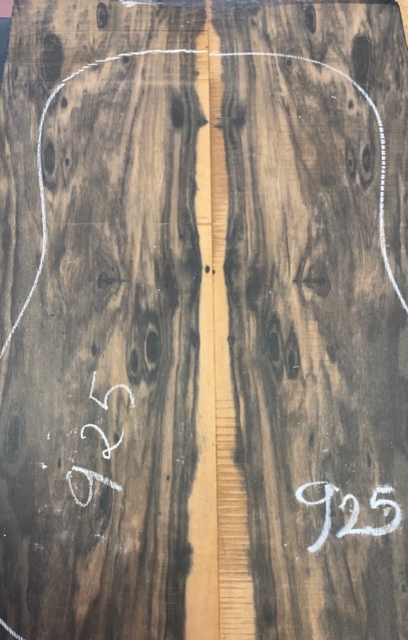



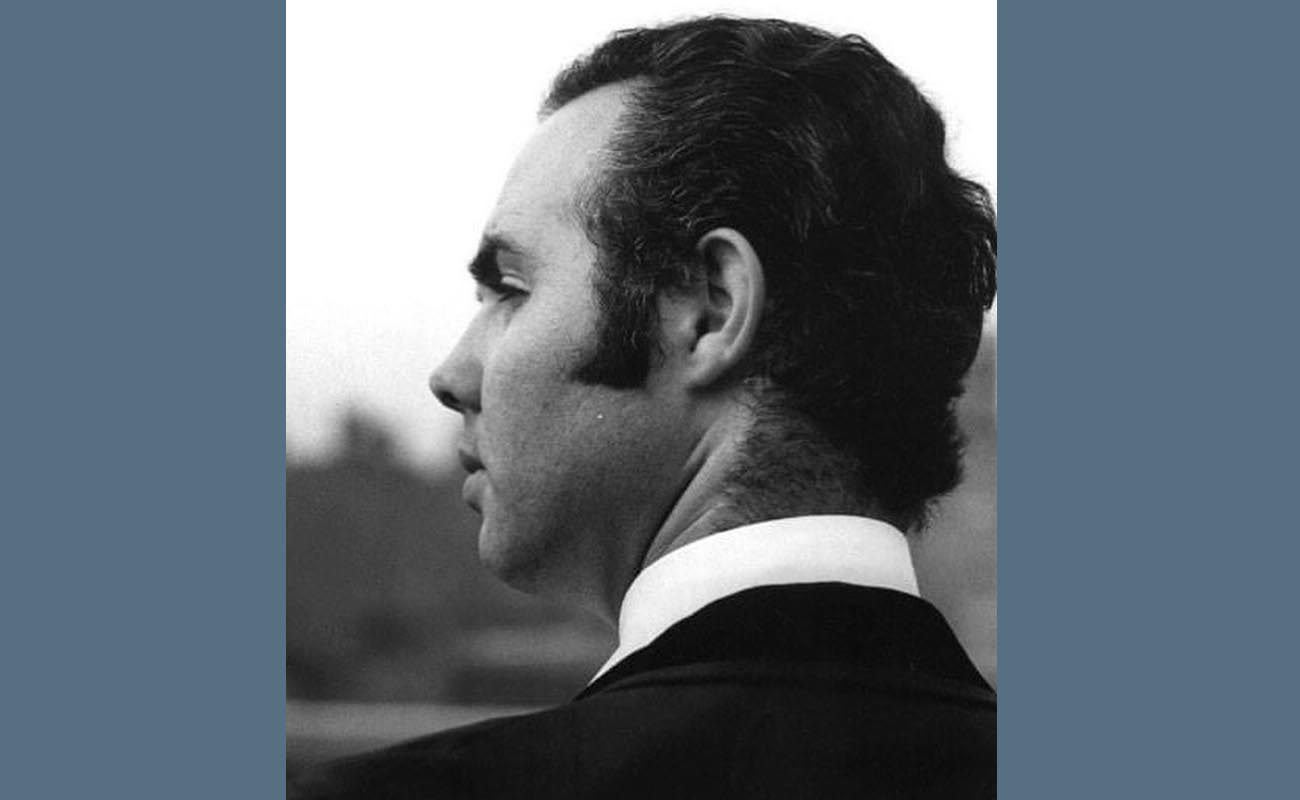
B.F. Tobin 18 January, 2024
Cedar from Central and South America is very good for necks, but not for soundboards. The Cedar used for soundboards is Western Red Cedar and not even related to “Spanish Cedar”.
Pablo J Garcia Rivera 8 May, 2024
Buenos dias muchas gracias por compartir tal valiosa informacion.
Pablo J Garcia Rivera 8 May, 2024
Gracias por compartir toda esa informacion.